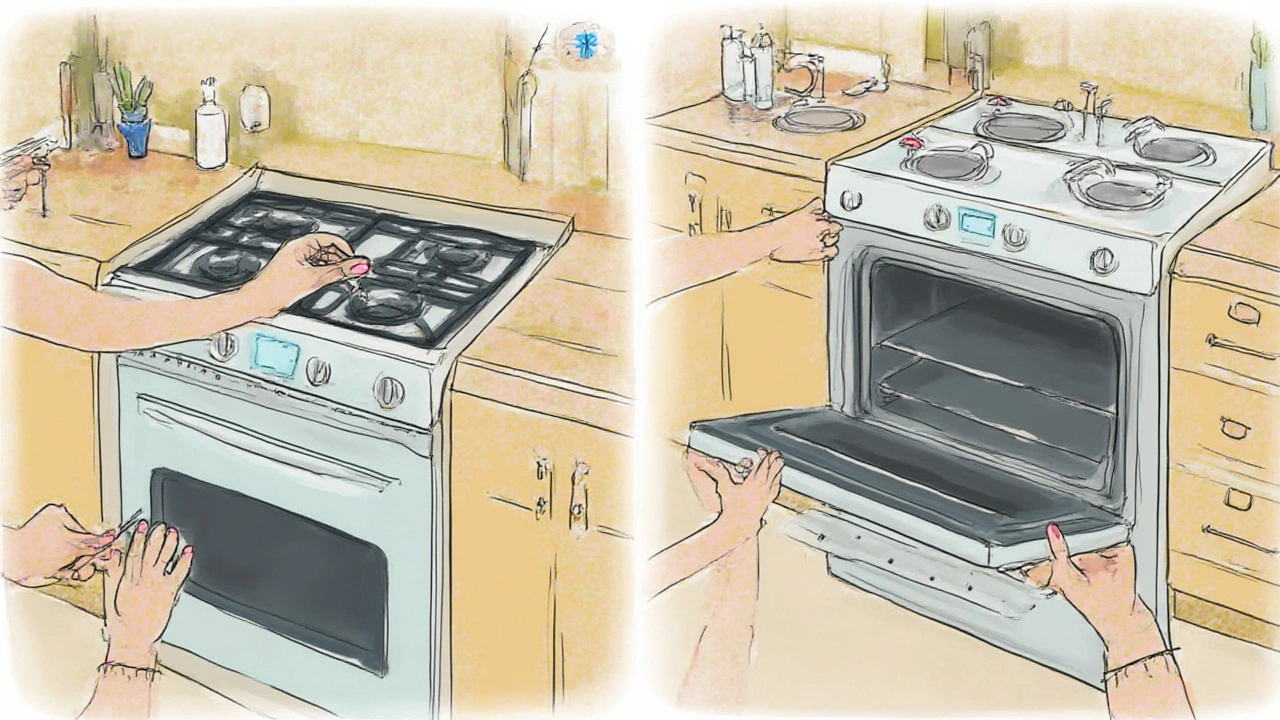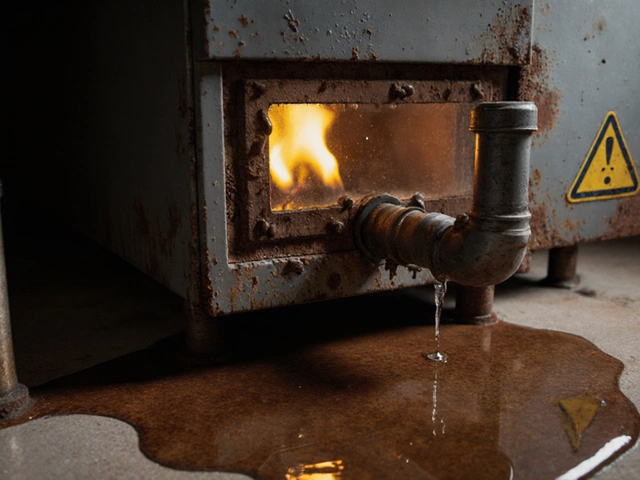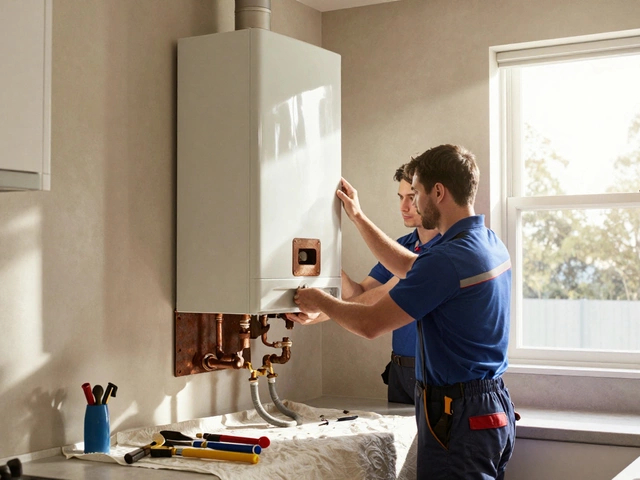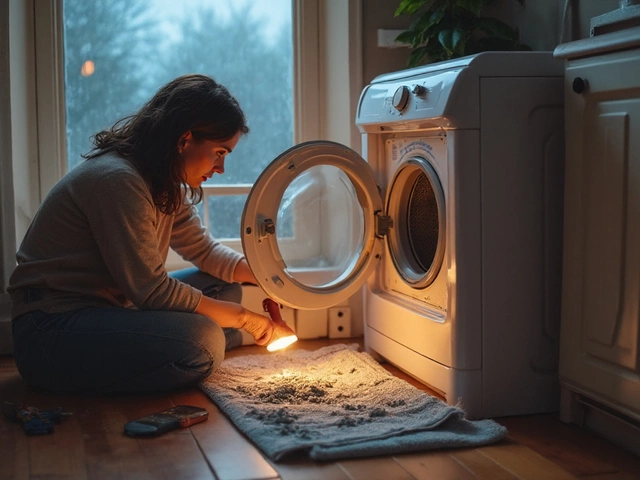If your oven suddenly plays the villain right before dinner, you’re not alone. Surprise breakdowns almost feel personal, right? The kitchen can turn into a detective scene—flashing lights that won’t turn off, mysterious beeps, uneven baking, the stuff of burnt cookies and ruined pizza nights. Ovens break down at the worst moments, and it's tempting to panic or blame fate, but hang on. Most oven problems have surprisingly fixable causes, and you might be able to sort things out without calling in a pricey professional. Here’s how to take control, get your oven working again, and avoid wasted meals (and moods):
First Steps: Safety, Common Symptoms, and What to Check Right Away
Before touching any part of your oven, safety first. Always unplug the appliance and turn off the power at the circuit breaker. Electricity isn’t forgiving. If you smell gas, open windows immediately, leave the house, and call your gas provider. Never tinker with a gas oven while it’s connected—or worse, if you aren’t sure it’s safe.
Once you’re sure it’s safe, pay attention to what the oven is doing—or not doing. Does it refuse to heat? Is the display going dark, or blinking odd codes? Maybe the oven heats unevenly, or only one of the elements glows. Jot down these clues. A survey by the Association of Home Appliance Manufacturers found that the most common oven complaints are:
- Oven not heating at all
- Oven heats unevenly
- Faulty oven light or display
- Odd smells or noises
Start with the basics. Did someone accidentally set the oven to ‘timer’ or ‘delayed start?’ Did the circuit breaker trip? (Give it a quick glance, sometimes you’ll find the answer right there.) Check that the oven is plugged in tightly. These simple checks solve the issue in almost 15% of oven repair calls, believe it or not. I once thought our oven was broken, but my spouse, Ella, found the plug had slipped slightly loose. Five seconds to fix, hours saved.
Oven Won’t Heat: Heating Elements, Igniters, and Thermostats
If your oven stays stubbornly cold, there are a few likely suspects. For electric ovens, the heating elements—those metal rods on top or bottom—should glow red hot when in use. If they don’t, either the element is burnt out or there’s a wiring issue. Shine a flashlight and look for obvious damage or breaks. Some elements wear out after about 5,000 hours of use. Replacement elements are available for most brands and snap in with basic tools. Just make sure the oven’s unplugged before you poke around.
Gas ovens use an igniter instead. It’s a small, usually rectangular bar near the burner. If you don’t hear the normal “click-click” sound or see a tiny orange glow when trying to bake, it’s probably the igniter. They wear out, too, often within 3-5 years. A faulty igniter means your oven won’t light at all or will struggle to heat up. Replacing it takes a screwdriver and patience, not expert skills.
The oven’s thermostat could be at fault, silently misreading the temperature. This can mean no heat or the wrong heat, which causes ruined bakes. To check, use an oven thermometer (about $10 at most stores). Preheat your oven and compare its temperature with the thermometer’s reading. If there's a big gap, the thermostat probably needs recalibration or replacement. Some digital ovens let you recalibrate in the settings menu. Others need a new sensor. Here’s a quick comparison of common parts and their life expectancies, for curiosity’s sake:
| Oven Part | Average Lifespan |
|---|---|
| Heating Element (Electric) | 3–5 years |
| Igniter (Gas) | 3–7 years |
| Thermostat/Sensor | 5–10 years |
| Door Gasket | 4–6 years |
If any part looks scorched, brittle, or deformed, that’s your clue. Remember, always buy parts that match your oven’s model number. Mixing brands and models rarely ends well.

Even Heating and Cooking: Fixing Uneven Baking and Roasting
If your cookies are half-burnt, half-doughy, the problem could be with heating elements or worn insulation. Sometimes it’s just how you’re using the oven. Racks placed too high or low mess with air circulation. Don’t overcrowd pans—space allows heat to move. A study from Consumer Reports found that oven overheating or underheating at the edges is the main culprit behind uneven bakes.
Check if the fan (in convection ovens) is working. Sometimes crumbs wedge into the blades, stopping them from spinning. If your oven is a standard (not convection) model, you might need to rotate pans mid-bake for better results.
The oven door gasket—a rubbery strip around the door—can crack or tear after a few years. If heat escapes through a bad seal, you’ll get cold spots and slow baking, and your oven has to work overtime, risking expensive failures. Run your hand gently around the door when the oven is on (don’t touch any hot parts!). If you feel hot air, the gasket’s compromised. Replacements are cheap and snap in easily.
Sometimes, food spills burn on the oven floor, affecting how heat is distributed. Clean those up, or you risk weird odors and more uneven cooking. For serious cleaning—try running a self-clean cycle if your oven offers one, but don’t use harsh chemicals that can corrode parts or stink up your house for days.
If you suspect a wiring issue, leave that to electricians unless you’re really sure of yourself. Messed-up wiring can turn your oven into a fire hazard. My cousin once melted her oven’s control board trying to fix a cable herself. Now, she makes bread in an air fryer.
Fixing Key Features: Oven Lights, Timers, Digital Displays, and Self-Clean Functions
An oven with a busted light or flickering display is a pain, but usually easy to fix. The lightbulb inside burns out just like household ones—twist it out and take it to the hardware store for a match. If the new bulb doesn’t work, the socket or the switch may be faulty. Those can be swapped if you’re careful, but don’t stick tools inside a live oven. Always unplug first.
If the digital display is dark or glitching, it could be a failed control board, loose wiring, or just a power blip. First, reset the oven by unplugging it, waiting a minute, and plugging it back in. (Yes, it sounds like classic tech advice, but it fixes “frozen” displays on ovens, too.) If it doesn’t help, you may need a new control board—the average price is $150-$300 for part and labor.
Timely reminders, beeps, or even self-clean cycles refusing to start often mean a control issue. Double-check if the kid-lock or timer features have been accidentally activated. My little niece once set every single function on the oven at once, and we spent an hour just clearing digital codes.
For self-cleaning ovens, if the cleaning cycle won’t start or locks you out, power it down fully and restart. Never force the oven door; the locking mechanism is delicate and expensive to replace. Remember, self-cleaning gets extremely hot, and you should never use oven cleaner sprays in self-clean mode, as they can cause chemical reactions and fumes.

When to Call a Pro and How to Prevent More Oven Trouble
If you’ve tried everything and the oven’s still misbehaving, don’t stress. Sometimes, the fault is inside the main circuit board or the wiring behind the wall, places best left to certified repair techs. As a rule, if you see scorch marks, smell sharp electrical burn odors, or if the oven trips your breaker every time you power up—call a professional.
Prevention beats repair. Care for your oven and you’ll save yourself money down the road. Clean up spills quickly to prevent food from burning onto elements. Every three months, give the oven a deep clean. Test the door seal by using a sheet of paper—close the door on the paper and tug. If it slides out easily, your seal may be worn. Check the oven’s temperature with an oven thermometer once a year to spot heating issues before they ruin dinner.
Another practical tip: avoid resting heavy pans or pizza stones directly on heating elements. This stresses the elements and sometimes warps the racks. Use the designated racks or pan supports provided by the manufacturer.
Here’s a neat stat: fixing minor oven problems yourself saves households in the US up to $360 a year on appliance service calls. Replacement parts for most common problems cost under $50, compared to a $120–$300 repair bill for a technician visit. Even if you’re not a natural handyman, you can master most fixes with the help of YouTube tutorials and repair guides online — just be sure the advice matches your exact oven model.
Bottom line? Stay calm, approach each symptom step-by-step, and don’t be afraid to get your hands dirty (safely, of course). Most oven mysteries aren’t so mysterious once you know what to check. That next batch of brownies or sheet pan dinner should come out just right—no cold spots, no stress, just victory.





